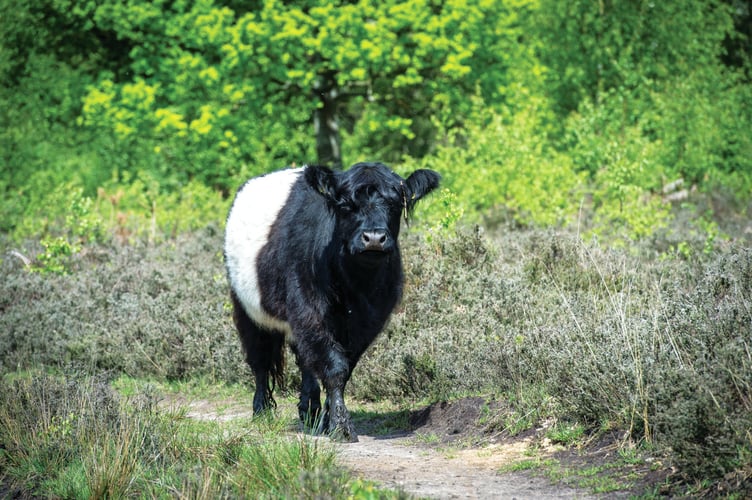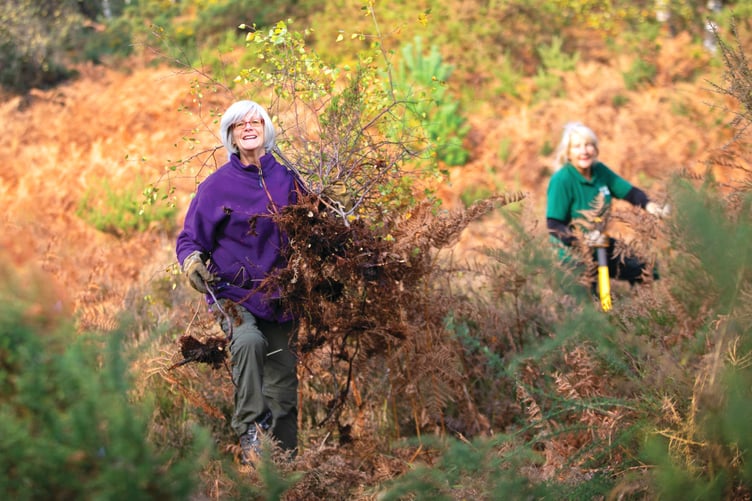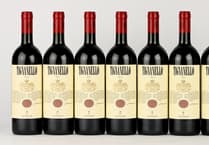WE have referred to “scrub” many times in the News & Mail, most recently in relation to Surrey’s precious lowland heathland habitats in Chobham Common and Pirbright Ranges.
Scrub is the collective term for a range of woody vegetation. It can include young trees such as silver birch, hawthorn and Scots pine, tall shrubs such as gorse, hawthorn and dogwood and also garden escapees such as rhododendron and pyracantha which should not inhabit heathland.
Scrub is a vital habitat for many species and an important component in a diverse ecological community but, if left uncontrolled, it can quickly take over and suffocate valuable heathland habitat.
Surrey Wildlife Trust (SWT) has to maintain the right balance on the nature reserves that it manages. “You might describe it as the wildlife counterpart to garden weeds,” explained James Herd, the trust’s director of reserves management.
“On lowland heath, for example, unmanaged silver birch scrub soon starts to encroach. Soon the area reclaims what is known as climax vegetation cover – usually woodland – in a natural process called succession. Eventually, the heathland habitat is lost, and also the species that depend on it.”
Controlling scrub is important, as it tends to suppress more delicate flora and constrains biodiversity. Fewer plant species results in fewer invertebrates, birds and other animals.
“However, while a gardener may aspire to a flawless flowerbed, our priorities are different,” said James. “Biodiversity demands a mosaic of habitats, so we encourage pioneer communities of native species, alongside bare ground, mature vegetation and more. Managing this mosaic requires expertise and sensitivity.”
Scrub has several benefits. Like other plants, scrub species traps carbon and can lead to a more climate-resilient landscape. Trees and bushes can also provide underground places for reptiles to hibernate over the winter, within the gaps between roots and the soil.

In summer, scrub provides perches for songbirds, shady pockets of cooler microclimate, and wind shelter for butterflies and moths. It also includes food plants for hundreds of invertebrates, including butterflies, moths, leafhoppers and shield bugs.
SWT says grazing by animals is an excellent way to manage scrub and has its own herd of Belted Galloway cattle, which is rotated between various nature reserves to help reduce scrub. However, cattle are only part of the solution, as 90% of their diet is grass.
Red deer are highly effective in reducing scrub. This is SWT’s solution at Pirbright Ranges, where it has a herd of red deer. “In autumn, the males bash trees and bushes while cleaning the velvet from their antlers,” said James.
“They also browse new shoots, reducing their length and slowing growth. This causes gorse, for example, to grow in a more compact fashion, creating a more insulated structure that can be a lifesaving refuge for overwintering birds such as the Dartford warbler.
“We also rely on volunteers, who predominantly use hand tools such as loppers, bow saws and tree poppers. They work precisely, avoiding damage to ant hills and other natural structures and can clear single stands of saplings where required.
“Contractors with heavy equipment are vital too, especially in difficult conditions, where access is tricky, and on large-scale projects.
“The key is applying knowledge and skill to a range of tasks, according to the needs of a specific site. A considered approach to scrub management can play a huge part in maintaining precious habitats.”
SWT welcomes members of the public to join its conservation working parties. All sessions are led by a member of staff or experienced volunteer, so you don’t need to be an expert to get involved.
Find out more or register to be a volunteer in the Support Us section of www.surreywildlifetrust.org.





Comments
This article has no comments yet. Be the first to leave a comment.